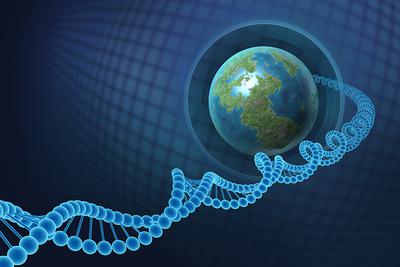When historians write the history of our era, they will mark the new millennium as the inception of the Biological Century. The design and development of the COVID-19 vaccines are a stunning example of the potential of the Biological Century to solve a worldwide threat. It is not, however, the first example, and, will in the end be just one of many examples of how biology transformed the world in the twenty-first century. Our increasing ability to harness biology for the benefit of humanity and the world is unprecedented. It is a wellspring of hope and potential.
The essence of the Biological Century is a virtuous cycle of advances in biological technologies and biological understanding. These synergies provide the foundation for designing and developing products that unequivocally benefit people and society in unprecedented ways. Advances in physics and material sciences supported developments in information technology and communications that transformed nearly every aspect of our lives in the latter part of the twentieth century. In the twenty first century, advances in biology will support developments in therapeutics, vaccines, diagnostics, agriculture, food, and other areas that will transform lives profoundly and create value and impact disproportionate to other areas of endeavor.
Technological progress is driving the Biological Century. How? We now have the ability to analyze, quantitate, synthesize, edit, and regulate DNA and RNA in tissues and in single cells, and techniques to characterize and quantitate epigenetic modification of genes and gene regulation. In vivo imaging advances such as 2D and 3D magnetic resolution imaging and computed tomography, positron emission tomography, ultrasound, and functional magnetic resonance imaging make it possible to directly observe structures and functions in the body in real-time and at high resolution. Artificial intelligence, machine learning, computational modeling, and natural language processing are making in possible to discern patterns and interactions among components of biological systems that, for the first time, are revealing how these enormously complex systems work and go awry.
These technologies are producing insights that are inspiring an ongoing reappraisal of how we conceive of disease predisposition, cause, progression, and even how we classify different diseases. They are revealing that diseases of different people who appear clinically identical may, in fact, have entirely different underlying causes, and, therefore, require entirely different treatments. Likewise, they are revealing that people with apparently different diseases may share overlapping cellular processes that cause them to respond to the same therapy. They have begun to make it possible to identify people who are in a pre-disease state, months or years before developing overt signs and symptoms of disease, opening the exciting possible of preventing disease in these individuals. They are allowing us to determine that cells long considered to be identical have important differences that can be exploited therapeutically. They have taught us that every individual (human, animal, and even plant) coexists with diverse communities of bacteria and commensal viruses. The composition of these communities, and their interactions with their hosts, strongly influence health and disease, expanding our very conception of the nature of an individual. They have opened the possibility of embracing the inherent complexity of disease in therapeutically actionable ways for the first time.







